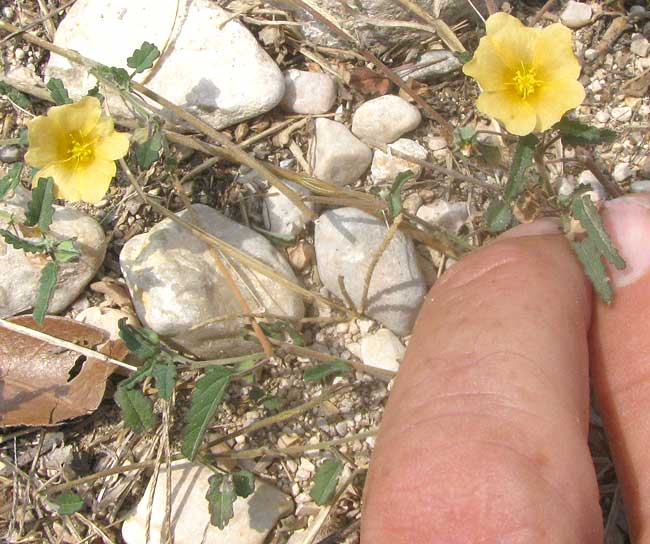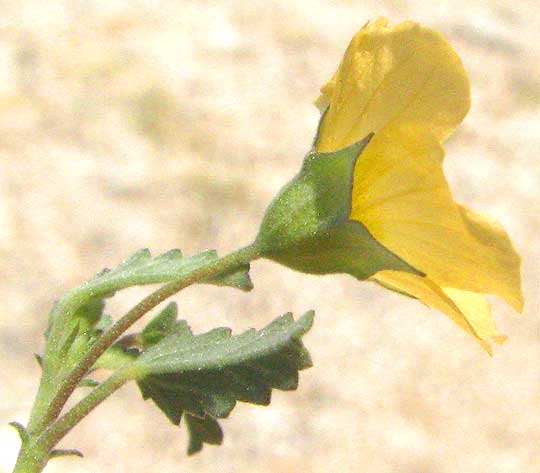Excerpts from Jim Conrad's
Naturalist Newsletter

from the August 25, 2013 Newsletter issued from the Frio Canyon Nature Education Center in the valley of the Dry Frio River in northern Uvalde County, southwestern Texas, on the southern border of the Edwards Plateau; elevation ~1750m (~5750 ft); N29.62°, W99.86°; USA
SPREADING SIDA
In Mexico we looked at many small herbs with yellow to orange flowers, which were members of the big Mallow or Hibiscus Family, the Malvaceae. You may recall that a good field mark for that family is that usually the flower's many stamens unite by their stems, or filaments, into a cylinder surrounding the style. Several look-alike genera fit this description, so identification can be hard work. Often fruit structure was the main distinguishing feature.
Beside a pathway through grass and weeds in the gravelly floodplain of the Dry Frio River, such a little herb turned up with flowers no bigger than fingernails, as you can see above.
Notice that the plant's stems lie flush with the ground naturally; my fingers aren't pressing them down. The species is described as a "procumbent perennial herb," procumbent describing such ground-hugging stems. Also notice that leaves immediately below the flowers are narrow while those arising from stems on the ground are oval shaped. But all the leaves have saw-toothed, or "dentate," margins.
A close-up is shown below of a flower showing its stamens' many pollen-releasing anthers clustered at the flower's mouth, and five long, slender style branches tipped with tiny stigmas shooting from inside the anther cluster:

A side view of the flower showing the spreading calyx with five long-tipped sepals appears below:

Details leading us to the genus and species are so technical and hard to see that in this case it's just best to try to remember that a small plant with these features is a Sida, Sida being both the common and technical name. This species is SIDA ABUTIFOLIA, sometimes referred to as Spreading Sida, Prostrate Mallow or Spreading Fanpetal. Maybe five Sida species can be found in our area, but those other species don't have prostrate stems. The especially long styles issuing from the anther cluster also is a good field mark.
Spreading Sida occurs throughout the American tropics, extending into the US in southern Arizona and New Mexico, most of Texas, and southernmost Florida.
In Daniel Austin's Baboquivari Mountain Plants: Identification, Ecology, and Ethnobotany," partially available via Google Books, I read that in Mexico Spreading Sida is used medicinally to treat boils and kidney problems. (The Baboquivari Mountains lie 50 miles, or 80 km, southwest of Tucson, Arizona.)
Austin also describes Spreading Sida as a small herb hiding in grass in weedy areas, and that's exactly right.